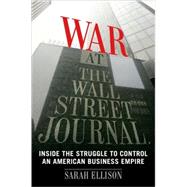
Note: Supplemental materials are not guaranteed with Rental or Used book purchases.
Purchase Benefits
What is included with this book?
| Cast of Characters | p. ix |
| Prologue | p. xv |
| The Fix | p. 1 |
| Cousins | p. 13 |
| The Unraveling | p. 28 |
| The Newsroom | p. 46 |
| Billy | p. 59 |
| The Chase | p. 72 |
| The Letter | p. 83 |
| The Wait | p. 95 |
| Personal and Confidential | p. 102 |
| Not No | p. 107 |
| Exploring Alternatives | p. 123 |
| Family Meeting | p. 132 |
| Editorial Independence | p. 143 |
| Decisions | p. 155 |
| First Day | p. 163 |
| Meet Mr. Murdoch | p. 172 |
| Interregnum | p. 175 |
| Chiefs | p. 184 |
| Taking Bullets | p. 192 |
| Resigned | p. 196 |
| Thomson's Journal | p. 218 |
| One of Us | p. 225 |
| Urgent | p. 228 |
| Epilogue | p. 236 |
| Acknowledgments | p. 245 |
| Sources | p. 248 |
| Index | p. 260 |
| Table of Contents provided by Ingram. All Rights Reserved. |
The New copy of this book will include any supplemental materials advertised. Please check the title of the book to determine if it should include any access cards, study guides, lab manuals, CDs, etc.
The Used, Rental and eBook copies of this book are not guaranteed to include any supplemental materials. Typically, only the book itself is included. This is true even if the title states it includes any access cards, study guides, lab manuals, CDs, etc.